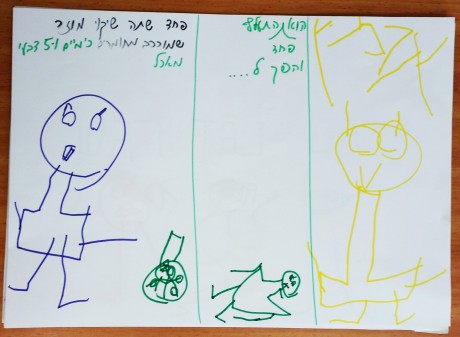Mindfulness and Creative Approaches in Therapy for Children with ASD
This article is part of a book of conference articles titled "Autism Talk," published in 2017.
Although children with ASD receive treatment in educational and therapeutic settings, the primary and most significant contributors to a child’s development are their parents. Research has shown that parents of children with autism experience higher levels of stress compared to parents of children with other disabilities or developmental delays. Importantly, a study has demonstrated that parents with higher levels of self-compassion tend to exhibit greater emotional resilience compared to those with lower levels of self-compassion. These parents tend to demonstrate greater tolerance and acceptance toward their child's behaviour and the challenges they face in their relationship with their children (Neff & Faso, 2014). Other studies have found that mindfulness training helps reduce burnout among parents of children with ASD. Based on my professional experience, I have found that parents of children on the spectrum can greatly benefit from mindfulness and creativity approaches as tools to balance their care for their child, themselves, and other family members, while also managing frustrations, uncertainties, and other challenges in the parenting experience (Singh et al., 2006).
In his book *Destructive Emotions*, Daniel Goleman (2005) notes that emotional regulation is a process rather than an outcome that can be measured solely through expression. He discusses research indicating that the brain is flexible and shaped by both early and later life experiences. These studies suggest that emotional regulation can be learned, and that it is possible to overcome inherent tendencies that make emotional regulation challenging (Davidson, 2004).
In relation to these studies, I will describe the treatment process of a five-year-old child with ASD. Ron (a pseudonym) is a sweet child with high intellectual abilities, which contrast sharply with his emotional capacity to tolerate frustration. Ron entered the therapy room and asked to draw and then cut out his drawing (at that time, Ron had difficulties with fine motor skills). After drawing a circle, Ron began to cut along the marked line but strayed from it. He burst into tears, sat down in the center of the room, and, while crying heavily, repeatedly shouted, "I am a failure." His crying filled the room with a sense of pain and suffering. I stayed with him through the difficulty, breathing mindfully as I observed him. Ron looked directly at me and began to take deep breaths. This physical act of mindful breathing helped Ron calm down. I suggested that we use our imagination to "look at failure." While breathing, Ron described failure as a black, flat creature. I invited him to create "failure" so we could look at it together. Ron immediately took a lump of black clay and shaped "failure" (kneading the clay served as an additional soothing element, alongside the deep breathing, which helped relax his body). We both looked at "failure" together. Ron said, "I don’t know how to get rid of it..." This statement reflected a desire for change, and it seemed that the overwhelming sense of failure that had filled the room moments earlier had become something more manageable. I asked Ron what he would like to have in place of failure. After searching for a while, Ron finally settled on "success," beginning with the idea of "not failing." I invited Ron to imagine what "success" might look like. With the flat figure of failure still on the table, Ron created a colourful, tall figure with a walking stick.
His facial expression changed, and he added that "success" has a walking stick to help it. On the paper before us were two contrasting states: failure and success. I invited Ron to return to the cutting task and continue if he wished. This time, he approached the cutting again, and even though the cuts were not precise along the lines, Ron left the room feeling satisfied. Ron and I were present together in his pain, practicing mindfulness, which allowed us to "hold" the situation as it was. Through the creative process, Ron distanced himself from the source of frustration, enabling him to regulate his emotions and face the challenge.
